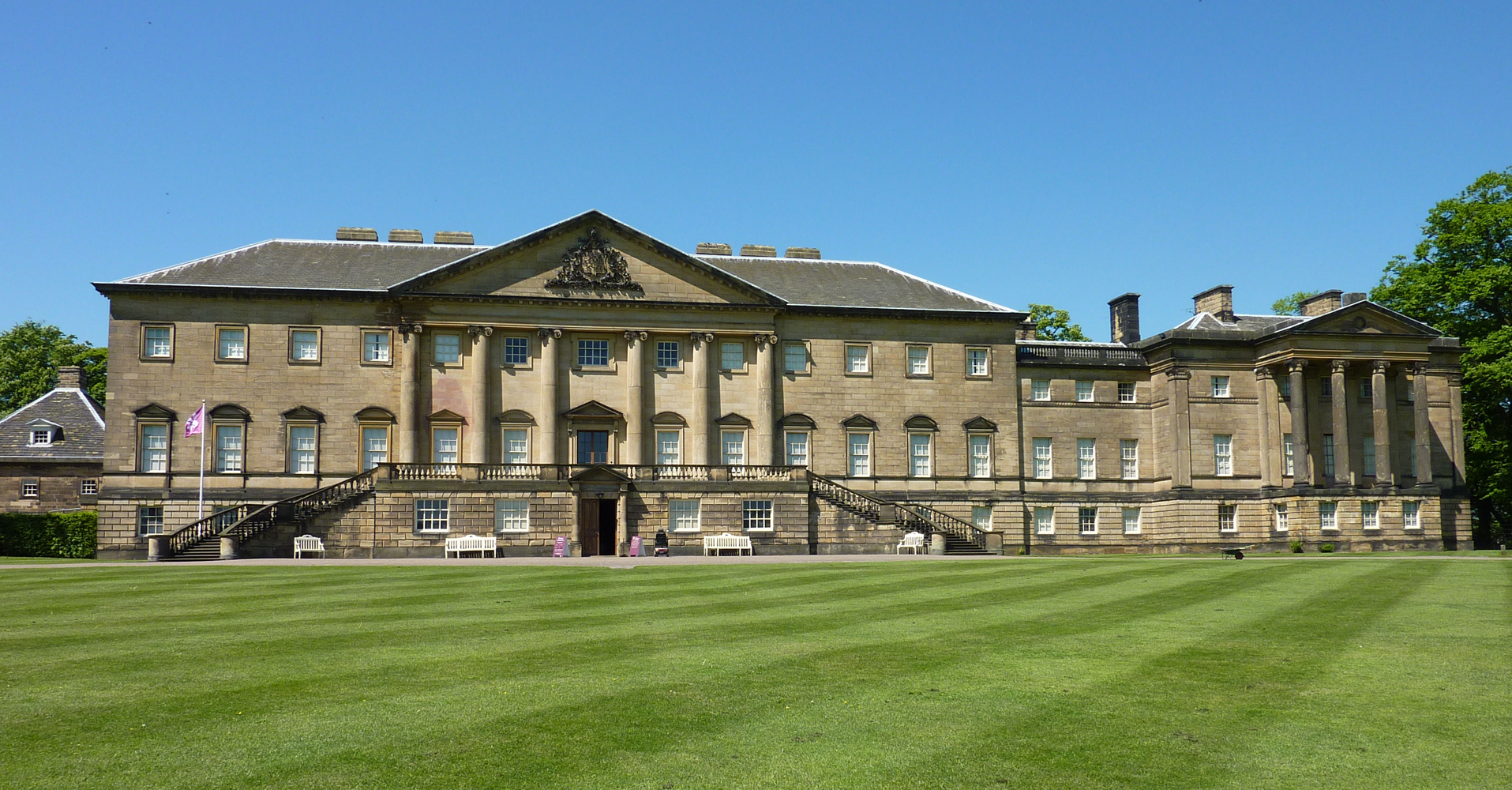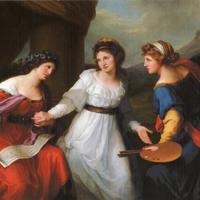More about Nostell

Contributor
The Nostell Priory and Parkland is a magnificent house, designed in the Palladian architectural style, standing on the site of a medieval monastery, and is maintained by the National Trust, a philanthropic organization in the United Kingdom.
In fiscal year "2017-18, more than 61,000 volunteers gave up their time to help out with looking after special [National Trust] places, and over 5 million people are National Trust members." The Nostell Priory and Parkland is a wonderful example of the National Trust's devotion to cultural revitalization: "Designed by James Paine (and later Robert Adam), the house is a glorious example of the Palladian style. It was built in the middle of the 18th century and even now all of the original furniture, much of it by Thomas Chippendale, remains in place. There are paintings by Brueghel and Hogarth on display," as well as Rowland Lockey's Sir Thomas More and his Family (after Hans Holbein the Younger), based on a lost Holbein.
The Palladian style, based on the work of the Venetian architect Andrea Palladio, is one of many movements to pay homage to the architecture of ancient Greece and Rome, and it serves as a constant visual reminder of the Greco-Roman influence, both good and not so good, that casts its long shadow over monarchies, like the United Kingdom, and Republics, like the United States, alike. Palladio's work is a distinctive remainder of the Venetian Republic, which lasted from 697 to 1797 C.E., and its cultural innovations of the Renaissance era. "The plans for the house, based on Palladio’s Villa Mocenigo, were likely formulated by Colonel James-Moyser; they were executed, with alterations, by James Paine in 1735-50. In the 1760s the 5th baronet commissioned Robert Adam to complete the interiors; the resulting Neo-classical decorations are among Adam's best."
The rare Chippendale furniture is, in many ways, even more of an attraction than the architecture and the paintings, as the finest examples of it are still in private residences, such as Nostell priory (1765-1785), Kenwood House (1764-1773), and Osterly Park House (1765-1780). Brueghel's Procession to Cavalry is another major asset, which was almost lost to the United Kingdom, but saved by private donations in 2011.
A truly radiant, enduring feature of the Nostell Priory and Parkland collection of Lord St. Ostwald is the Self-Portrait Hesitating Between the Arts of Music and Painting, a late-career work by Angelica Kauffmann. In the self-portrait, Kauffmann "cleverly appropriated and subverted" the "well-known imagery of 'choice'...by substituting her own image for that of Hercules, except that she appears modestly clothed." As Wendy Wassyng Roworth writes, Kauffmann makes a subtle statement about the functions of vision, desire, nudity, modesty, mythology, and gender relations by substituting a clothed version of herself for the nude Greek hero Hercules.
Sources
- "About the National Trust." The National Trust, https://www.nationaltrust.org.uk/features/about-the-national-trust.
- "An art and architecture walk through Nostell Priory, West Yorkshire." The Guardian, May 12, 2012, https://amp.theguardian.com/travel/2012/may/13/nostell-priory-west-york….
- Newton, Grace. "National Trust stately home Nostell Priory to open for free for one weekend only." The Yorkshire Post, Sep. 4, 2019, https://www.yorkshirepost.co.uk/heritage/national-trust-stately-home-no…-
- "Nostell Priory." Historic England, Dec. 1, 1984, https://historicengland.org.uk/listing/the-list/list-entry/1001224#cont….
- "Nostell Priory." National Trust Collections, http://www.nationaltrustcollections.org.uk/place/nostell-priory.
- "Nostell Priory's Chippendale 300th anniversary display." BBC News, May 7, 2018, https://www.bbc.com/news/amp/uk-england-leeds-44004271.
- "Robert Adam." Oxford Art Online, https://doi.org/10.1093/benz/9780199773787.article.B00000755.
- Roworth, Wendy Wassyng. "Anatomy is destiny: regarding the body in the art of Angelica Kauffman." In Femininity and Masculinity in eighteenth-century art and culture, edited by Gill Perry and Michael Rossington, 41-62. Manchester: Manchester University Pr
Featured Content
Here is what Wikipedia says about Nostell Priory
Nostell Priory is a Palladian house in Nostell, West Yorkshire, England, near Crofton on the road to Doncaster from Wakefield. It dates from 1733, and was built for the Winn family on the site of a medieval priory. The Priory and its contents were given to the National Trust in 1953 by the trustees of the estate and Rowland Winn, 3rd Baron St Oswald.
Check out the full Wikipedia article about Nostell Priory











